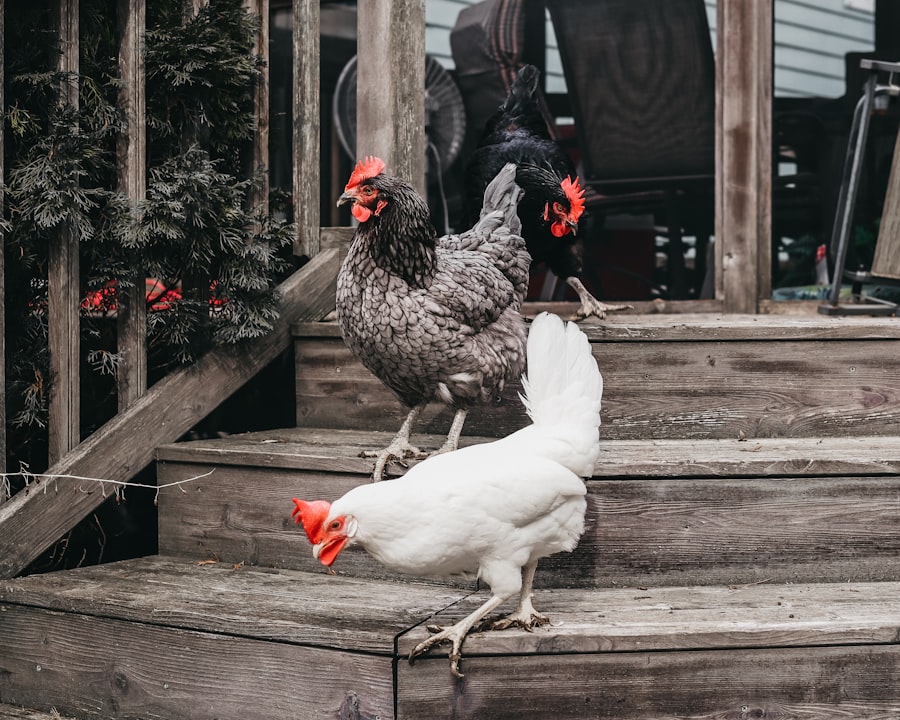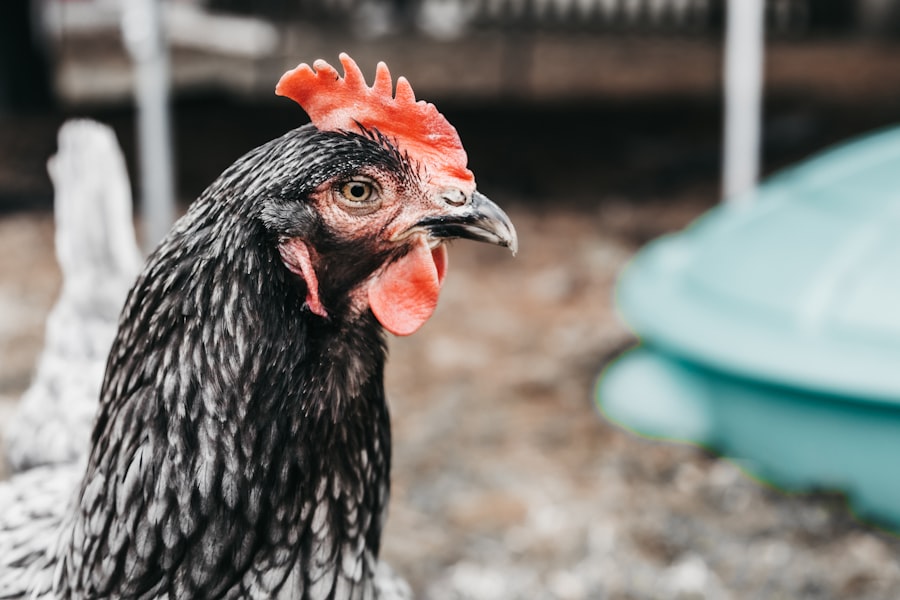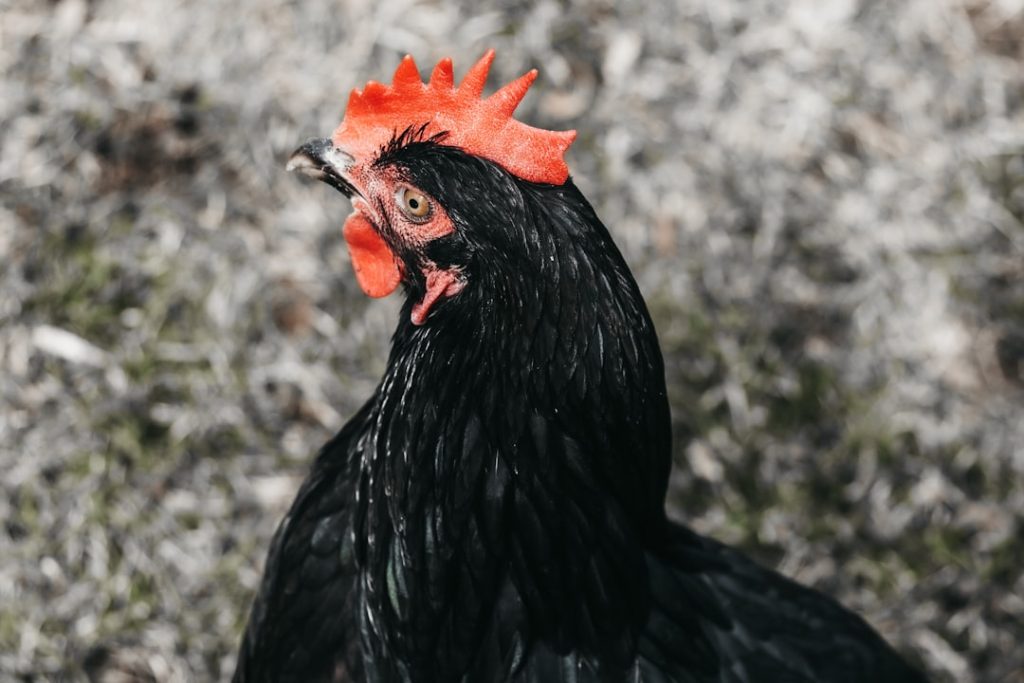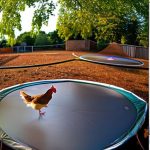Space requirements for keeping chickens are essential for the flock’s health and well-being. Chickens need room to roam, forage, exercise, and establish social hierarchies. The required space varies based on breed, age, and purpose of the chickens.
Laying hens typically need more space than meat birds, and larger breeds require more room than bantam varieties. Generally, it is recommended to provide a minimum of 2-3 square feet of indoor coop space per chicken and 8-10 square feet of outdoor run space. However, these are guidelines, and individual needs should be considered.
Factors such as climate, predator pressure, and available resources also influence space requirements. Chickens are social animals that thrive in environments allowing free movement and natural behaviors. Adequate space is crucial for establishing pecking orders, foraging, dust bathing, and other instinctive activities.
Insufficient space can lead to stress, aggression, and health issues like feather picking or cannibalism. When determining space requirements, it’s important to consider both the physical space needed for each bird and the social dynamics of the flock. Providing enough room for chickens to engage in natural behaviors helps minimize stress and promotes overall flock health and productivity.
Table of Contents
- 1 Factors to Consider When Determining Land Needs for Chickens
- 2 Calculating the Ideal Amount of Land for Your Flock
- 3 Tips for Maximizing Space for Chickens in a Limited Area
- 4 The Importance of Providing Adequate Space for Chicken Health and Well-being
- 5 Potential Challenges of Keeping Chickens on Limited Land
- 6 Finding the Right Balance of Land and Chickens for Your Situation
- 7 FAQs
- 7.1 What is the minimum amount of land needed to keep chickens?
- 7.2 What are the factors to consider when determining the amount of land needed for chickens?
- 7.3 Are there any regulations or restrictions on keeping chickens based on land size?
- 7.4 What are the benefits of providing ample land for chickens?
- 7.5 Can chickens be kept in urban or suburban areas with limited land?
Key Takeaways
- Chickens require a minimum of 2-3 square feet of space per bird in the coop and 8-10 square feet in the outdoor run.
- Factors to consider when determining land needs for chickens include the breed, size, and behavior of the chickens, as well as the climate and available resources.
- The ideal amount of land for a flock can be calculated by multiplying the number of chickens by the recommended space requirements and adding extra space for activities and foraging.
- To maximize space for chickens in a limited area, consider using vertical space, rotating grazing areas, and providing enrichment activities.
- Providing adequate space for chickens is important for their health and well-being, as overcrowding can lead to stress, aggression, and an increased risk of disease.
- Potential challenges of keeping chickens on limited land include odor and waste management, noise, and the need for careful planning and management to prevent overcrowding.
- Finding the right balance of land and chickens for your situation is crucial for the health and happiness of your flock, as well as for the overall success of your chicken-keeping venture.
Factors to Consider When Determining Land Needs for Chickens
Size and Breed of Chickens
The size and breed of the chickens are crucial factors to consider. Larger breeds will naturally require more space than smaller breeds, and certain breeds may have specific needs based on their natural behaviors.
Age, Purpose, and Outdoor Access
The age and purpose of the flock also play a significant role in determining land needs. For instance, growing chicks will need less space initially but will require more room as they mature, while laying hens may need more space than meat birds. Additionally, the availability of outdoor space is vital, as chickens with access to an outdoor run will require less indoor space, whereas those confined to a coop will need more indoor space.
Environmental Conditions
The climate and environmental conditions of the area will also impact the land needs for chickens. For example, chickens in colder climates may require more indoor space during the winter months, while those in warmer climates may benefit from larger outdoor runs.
By considering these factors, you can ensure that your flock has enough space to thrive and lead healthy, happy lives.
Calculating the Ideal Amount of Land for Your Flock

Calculating the ideal amount of land for your flock involves considering a variety of factors to ensure that your chickens have enough space to meet their physical and behavioral needs. One method for calculating land needs is to use the guidelines of 2-3 square feet of indoor space per chicken in the coop and 8-10 square feet of outdoor space in the run. However, these are just starting points, and it’s important to consider the individual needs of your flock when determining the ideal amount of land.
To calculate the ideal amount of land for your flock, you can start by assessing the size and breed of your chickens. Larger breeds will naturally require more space than smaller breeds, and certain breeds may have specific needs based on their natural behaviors. Additionally, you’ll need to consider the age and purpose of your flock.
Growing chicks will need less space initially but will require more room as they mature, while laying hens may need more space than meat birds. Another important factor to consider when calculating the ideal amount of land for your flock is the availability of outdoor space. If your chickens have access to an outdoor run, you can allocate less indoor space, as they will have the opportunity to roam and forage outside.
On the other hand, if your chickens are confined to a coop, you’ll need to provide more indoor space to accommodate their natural behaviors. In conclusion, calculating the ideal amount of land for your flock involves considering factors such as breed size, age, purpose, outdoor access, and environmental conditions. By taking these factors into account, you can ensure that your chickens have enough space to thrive and lead healthy, happy lives.
Tips for Maximizing Space for Chickens in a Limited Area
Maximizing space for chickens in a limited area requires careful planning and creative solutions to ensure that your flock has enough room to thrive. One tip for maximizing space is to utilize vertical space in the coop by adding roosts or platforms for chickens to perch on. This can help free up floor space and provide additional room for the birds to move around.
Additionally, using hanging feeders and waterers can help save floor space and prevent clutter in the coop. Another tip for maximizing space for chickens in a limited area is to create a rotational grazing system in outdoor runs or paddocks. By dividing the outdoor space into sections and rotating the flock between them, you can allow vegetation to regrow while giving the chickens access to fresh forage.
This can help maximize the use of outdoor space and provide a more natural environment for the birds. Furthermore, using portable coops or chicken tractors can also help maximize space by allowing you to move the flock to different areas of your property. This can help prevent overgrazing and give the chickens access to fresh ground while making efficient use of limited land.
In summary, maximizing space for chickens in a limited area involves utilizing vertical space in coops, creating rotational grazing systems, and using portable coops or chicken tractors. By implementing these tips, you can ensure that your flock has enough room to thrive even in a small or limited area.
The Importance of Providing Adequate Space for Chicken Health and Well-being
Providing adequate space for chicken health and well-being is essential for creating a sustainable and harmonious environment for your flock. Chickens that are overcrowded or confined to small spaces are more likely to experience stress, aggression, and health issues such as feather picking or cannibalism. By providing enough room for chickens to move around freely and engage in natural behaviors, you can help minimize these issues and promote overall well-being within the flock.
In addition to physical health, providing adequate space is also important for supporting the social dynamics of the flock. Chickens need space to establish a pecking order and avoid overcrowding or competition for resources. Without enough room, chickens may become stressed or aggressive towards one another, leading to negative impacts on their social well-being.
Furthermore, providing adequate space is important for allowing chickens to engage in natural behaviors such as foraging, dust bathing, and exercising. These activities are essential for both physical and mental stimulation and can help prevent boredom and behavioral issues within the flock. In conclusion, providing adequate space for chicken health and well-being is crucial for minimizing stress, promoting social harmony, and supporting natural behaviors within the flock.
By prioritizing space requirements and ensuring that your chickens have enough room to thrive, you can create a healthy and sustainable environment for your flock.
Potential Challenges of Keeping Chickens on Limited Land

Overcrowding: A Major Concern
One of the primary challenges of keeping chickens on limited land is overcrowding, which can lead to stress, aggression, and health issues within the flock. When there are too many chickens in a small area, they may compete for resources such as food and water, leading to negative impacts on their social dynamics.
Overgrazing and Depletion of Vegetation
Another potential challenge of keeping chickens on limited land is overgrazing or depletion of vegetation in outdoor runs or paddocks. Without enough room to rotate the flock or allow vegetation to regrow, chickens may quickly deplete available resources and create barren areas that are unsuitable for grazing.
Predator Control and Secure Coops
Furthermore, predators may pose a greater threat when keeping chickens on limited land due to reduced opportunities for free-ranging or access to safe areas. It’s essential to implement effective predator control measures and secure coops and runs to protect the flock from potential threats. By carefully managing these challenges and implementing strategies to maximize space and protect the flock, you can create a healthy and sustainable environment for your chickens even in a limited area.
Finding the Right Balance of Land and Chickens for Your Situation
In conclusion, finding the right balance of land and chickens involves understanding the space requirements for keeping chickens, considering factors such as breed size, age, purpose, outdoor access, and environmental conditions when determining land needs for chickens, calculating the ideal amount of land for your flock based on these factors, maximizing space for chickens in a limited area through creative solutions such as utilizing vertical space in coops or creating rotational grazing systems in outdoor runs or paddocks; providing adequate space for chicken health and well-being by minimizing stress, promoting social harmony, supporting natural behaviors within the flock; managing potential challenges of keeping chickens on limited land such as overcrowding overgrazing or increased predator pressure by carefully implementing strategies; ultimately creating a healthy and sustainable environment for your chickens even in a limited area. By carefully considering these factors and implementing strategies to maximize space while prioritizing chicken health and well-being you can create a harmonious environment that supports natural behaviors social dynamics physical health within your flock even in a limited area. It’s important to remember that every situation is unique so finding the right balance of land and chickens will depend on your individual circumstances goals resources available but by prioritizing space requirements understanding factors that influence land needs maximizing available space providing adequate room for your flock managing potential challenges you can create an environment where your chickens can thrive happily healthily regardless of limited land available.
If you’re considering keeping chickens, you may also be interested in learning about the mating season for turkeys. Understanding the breeding habits of different poultry can help you make informed decisions about the size of your flock and the amount of land you’ll need. Check out this article to learn more about turkey mating season and how it may impact your poultry plans.
FAQs
What is the minimum amount of land needed to keep chickens?
The minimum amount of land needed to keep chickens varies depending on the number of chickens and the local regulations. However, a general guideline is to have at least 2-3 square feet of space per chicken in the coop, and 8-10 square feet of space per chicken in the outdoor run.
What are the factors to consider when determining the amount of land needed for chickens?
Factors to consider when determining the amount of land needed for chickens include the number of chickens, local zoning regulations, available space for a coop and run, and the ability to provide adequate space for the chickens to roam and forage.
Are there any regulations or restrictions on keeping chickens based on land size?
Yes, many local governments have regulations or restrictions on keeping chickens based on the size of the land. These regulations may include minimum lot size requirements, setback requirements, and limits on the number of chickens allowed per acre.
What are the benefits of providing ample land for chickens?
Providing ample land for chickens allows them to exhibit natural behaviors such as foraging, dust bathing, and roaming. It also helps to reduce stress and aggression among the flock, and can contribute to healthier and happier chickens.
Can chickens be kept in urban or suburban areas with limited land?
Yes, chickens can be kept in urban or suburban areas with limited land, but it is important to ensure that the chickens still have enough space to move around, forage, and engage in natural behaviors. Additionally, it is important to check local regulations and restrictions on keeping chickens in these areas.
Meet Walter, the feathered-friend fanatic of Florida! Nestled in the sunshine state, Walter struts through life with his feathered companions, clucking his way to happiness. With a coop that’s fancier than a five-star hotel, he’s the Don Juan of the chicken world. When he’s not teaching his hens to do the cha-cha, you’ll find him in a heated debate with his prized rooster, Sir Clucks-a-Lot. Walter’s poultry passion is no yolk; he’s the sunny-side-up guy you never knew you needed in your flock of friends!







